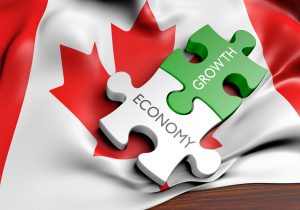Canada’s Economy Practically Grinds to A Halt – And Nobody Saw It Coming
The comments below are an edited and abridged synopsis of an article by Theophilos Argitis
Canada’s economy practically came to a halt in the last three months of 2018, in a deeper-than-expected slowdown.

The country’s economy grew by just 0.1% in the fourth quarter, for an annualized pace of 0.4%. That’s the worst quarterly performance in 2.5 years, down from annualized 2% in the third quarter and well below economists’ expectations for a 1% annualized increase.
While a slowdown was expected due to falling oil prices, it’s worse than anticipated, with weakness beyond the energy sector. Consumption spending, housing, business investment and domestic demand all posted declines.
The numbers suggest that heightened uncertainty has affected both consumer and business sentiment. The question is what the weak data suggests about the economy’s ability to return to normal growth levels.
Until recently, the economy had been doing relatively well. It grew by 3% in 2017 and expanded in the first half of last year, prompting the Bank of Canada to go ahead with higher borrowing costs.
But that strength was overstated, with Statistics Canada revising its estimates for first half growth to 2%. For 2018, the economy grew by only 1.8%. Monthly data shows the economy ended the year contracting.
Rising interest rates may be having a bigger effect on consumers than expected. Consumption slowed to 0.7% pace in the fourth quarter, the weakest growth since the start of 2015.
Business investment also disappointed, with non-residential capital spending down an annualized 10.9%— the third straight quarterly decline and the second consecutive drop of more than 10%. Residential investment also contracted for a second straight quarter, down an annualized 14.7%, the biggest drop since 2009.
